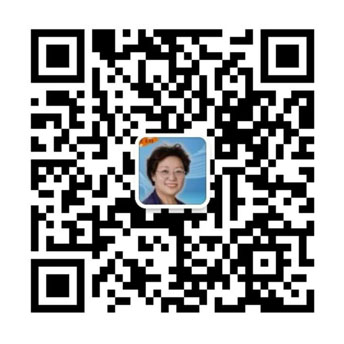您当前的位置:首页>>奠基人>>学术成果>>英文文章
Tian Ran1, Wang Zitian, Qi Wenquan, Yan Lijuan, Zhou Liwen,
Liuxia, Li Junxia, Guo Hui, Wang Yuling2
Abstract:
Acupuncture, as one of Traditional Chinese Medicine (TCM) treatment methods, is based on meridian. Because the understanding for meridian is not clear, and its treatment principle is stimulation, there are many uncertain factors in acupuncture curative effect. Bioelectricity resonance therapy (BRT) is based on meridian bioelectricity theory, and the treatment principle is resonance and conduction. BRT and acupuncture are supposed to share the common indications.
Acupuncture is a simple, effective and low-risk TCM method, and BRT is much simpler and with lower risk than acupuncture.
This report has randomly observed BRT curative effect in 279 patients, involved 96 types of diseases. The result is that the effects for most of those diseases are significant.
Keywords: Bioelectricity resonance therapy (BRT), curative effect, epilepsy,rare illness
Introduction
Rare illnesses are the diseases and symptoms which are incurable or difficult to cure. At present, there is short of specific treatment for those rare illnesses, especially nerve system diseases, such as pain, deafness, psychosis, epilepsy, wind-stroke syndrome sequelae, etc. Western medicine cannot find the pathogenesis for them, so the treatment is just to alleviate the symptoms. For muscular paralysis and muscle atrophy, the doctors can only help rehabilitation training, but not healing. The treatment for subhealth is to regulate the whole body condition. Acupuncture is a common used alternative for most rare illnesses treatment.
In 2007, the paper “The Nature of TCM Meridian Bioelectricity” was published in Advanced Science. Since then, our center has done more researches for bioelectricity resonance therapy (BRT), and observed the BRT curative effect for other diseases.
I、Clinical materials
Since June 2009, our center has gathered the data of 279 patients received BRT, and analyzed the curative effect. The treatment sites are PLA General Hospital (with 10 patients) and other non-medical institutions.
II、Treatment methods
The practitioners used BRT with SKY-303J and SKY-303Y instruments, along with PT method. It was done by 1-2 times per day, each time for 10-60 minutes.
III、Curative effect evaluation
i、Pain is the main evaluation index for functional diseases, and the effect depends on patients’ feeling;
ii、For other diseases, the effect is evaluated by current curative effect standards.
iii、Effective means the treatment effect is better than other treatment, and the patients are satisfied.
iv、With no effect means there is no difference with other treatment.
IV、BRT curative effect analyses by anatomic systems
i、Respiratory system:
Respiratory system consists of respiratory tracts and lungs, including the nose, pharynx, larynx, trachea, main bronchus and lungs. The active regions for bioelectricity are the diaphragm and chest muscles, lungs glands, smooth muscle, tracheal glands. Common diseases are colds, rhinitis, sinusitis, Minier syndrome, pharyngitis, emphysema, asthma, expectoration difficulties, etc.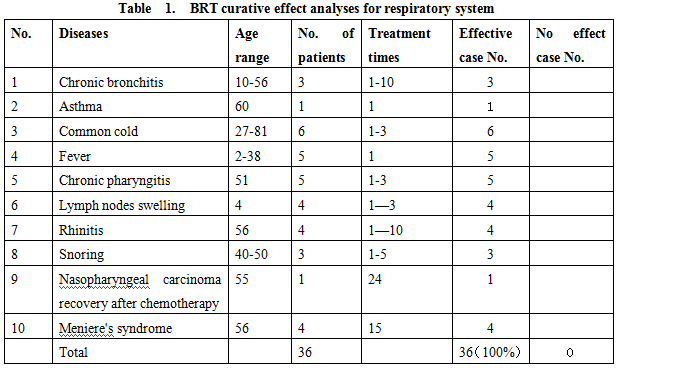
ii、Motion system:
Motion system includes bones, bone unions and skeletal muscles. The active bioelectricity regions are muscles, joints and bone marrow. Common diseases include muscular atrophy, paralysis, arthritis, effusion of joints.
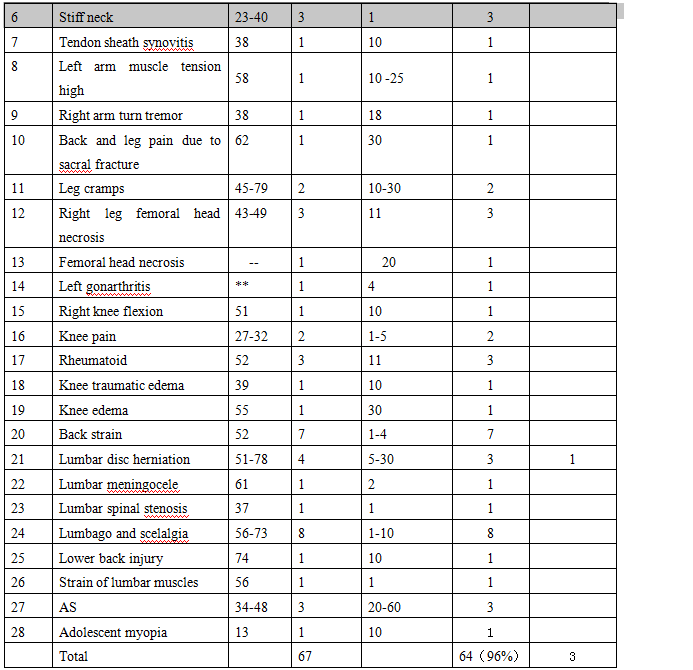
iii、Digestive system:
Digestive system is composed of digestive tracts and digestive glands. The active bioelectricity regions are the liver, pancreas, gastrointestinal internal glands, and smooth muscles. Common diseases include toothache, oral ulcers, gastritis, stomachache, indigestion, acute abdominal pain, appendicitis and hemorrhoids. BRT had been used in treatment of the toothache, oral ulcers, gastritis, stomach pain, indigestion, acute abdominal pain, appendicitis, hemorrhoids, constipation, loose stools, etc.
iv、Urinary system:
Urinary system is composed of the kidney, ureter, bladder and urethra. The active region for bioelectricity includes glands and smooth muscles. Common diseases include nephritis, edema, urinary urgency, urinary frequency, dysuria, cystitis, urinary tract inflammation, kidney stones, prostatitis (primary stage), and testitis. 
v、Circulatory system:
Circulatory system includes cardiovascular system and lymphatic system. The active regions for bioelectricity are mainly smooth muscle and myocardium. Common diseases include hypertension, varicose veins, etc.
vi、Nerve system:
Nerve system is the most active bioelectricity region, and the main diseases are insomnia, headache, Autism, cerebral paralysis, wind-stroke, palsy, epilepsy and depression.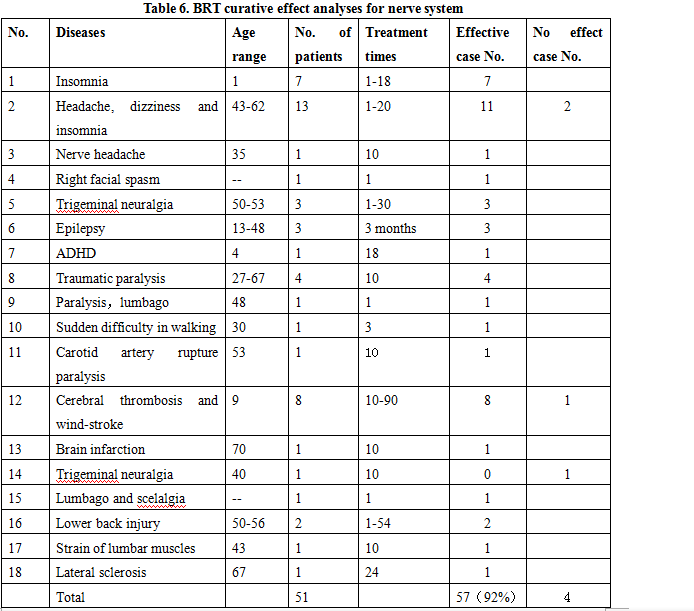
vii、Endocrine system:
Endocrine system is composed of the endocrine glands and other endocrine cells. The main endocrine glands are thyroid, parathyroid, adrenal, pituitary, pineal gland, pancreatic islets, thymus and gonads, and the major diseases include diabetes, hypertension, hyperthyroidism, etc.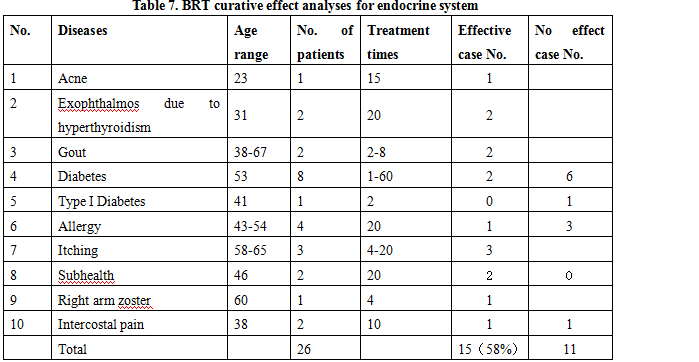
viii、Reproductive system:
Reproductive system is to produce reproductive cells and to reproduce. The active bioelectricity regions are glands and smooth muscle. And the common diseases are including gynecological diseases and andrological diseases. Gynecological diseases include dysmenorrhea, gynecological inflammation, ovarian cysts, and sterility. Andrological diseases include male sexual dysfunction, prostate problems, etc.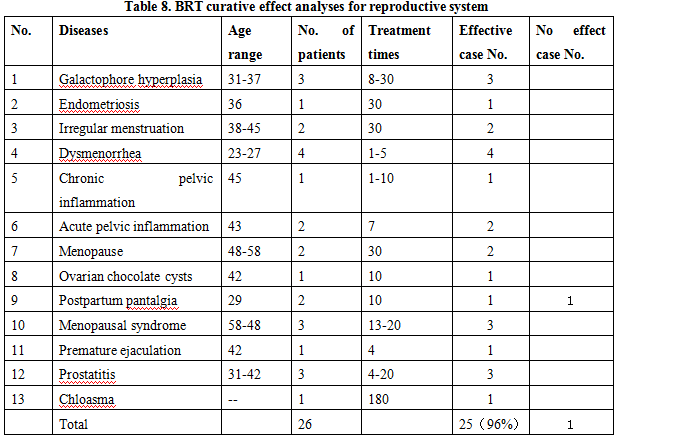
V、Preliminary observation for BRT curative effect
Many patients with rare illness had received various treatments before they received BRT (in Table 1~ Table8). From the tables, BRT is effective for many diseases. The BRT effective rare illnesses include snoring, epilepsy, and plant man wakening, multiple sclerosis, lateral sclerosis, ankylosing spondylitis (AS), Meniere's syndrome, etc. The BRT effective common diseases are toothache, chronic pharyngitis, common cold, fever, chronic bronchitis, rhinitis, acne, chloasma, gastrectasia, stomachache, acute enteritis, chronic enteritis, premature ejaculation, galactophore hyperplasia, dysmenorrhea, acute pelvic inflammation, three urgently purgative syndrome, swollen lymph nodes, etc.
The analyses for 96diseases, including the treatment times and effect, are as follows:
i、For the non-structural diseases, BRT has quicker and more significant effect, such as fever and pain. From Table 3, there were two toothache cases without effect, one with wisdom tooth, and the other with ceramic crown.
ii、The cerebral diseases had slower effect, such as epilepsy and wind-stroke sequelae.
iii、Diabetes mellitus, hypertension and allergic diseases were systemic disorders, their effects were not significant.
iv、Pain symptoms without structural diseases could mostly relieve after first treatment.
v、Diseases related with edema had quick effect, such as strain, joint synovial fluid, Meniere's syndrome, etc.
vi、For gynecological problems, including irregular menstruation, endometriosis and menopause, the treatment needed a longer time, usually 3~6 menstruation periods.
vii、The treatment for skin pigmentation, e.g. chloasma, needed much longer time.
In conclusion, BRT has significant curative effect on the motor system, digestive system, respiratory system, urinary system, nervous system, and reproductive system disease. However, its effect is not very good for circulatory system and endocrine system. More research can be done on certain diseases, including hypertension and diabetes, especially the treatment method.
VI、Curative effect analyses
i、To evaluate the effectiveness, western medicine chooses a certain amount of patients with the same diseases or symptoms, and offers relative treatment, then calculates and analyzes the outcome, finally receives the effective rate. The clinical trials sometimes choose self-controlled or randomized controlled methods to minimize systematic error and individual differences. The self-controlled trial is to compare the patients’ differences between before the treatment and after the treatment, in which the systematic error is small.
ii、Acupuncture is one TCM treatment, and the curative effect is always based on self-control method, for TCM emphasizes the individual treatment. That means different patients with the same diseases may be treated differently; and different patients’ responses to the same treatment may vary quite a lot. Therefore, acupuncture usually chooses self-controlled method to minimize the error.
iii、Although acupuncture has certain curative effects, the acupuncture clinical application bottleneck is that its curative effect is uncertain and uncontrollable. It is difficult to describe the acupuncture effectiveness, and to predict the curative effect. BRT is a simple physical therapy, and the curative effect is certain and controllable.
VII、Curative effect discussion
i、For common diseases: Common diseases are not life-threatening and very easy to cure, such as toothache, common cold, enteritis, etc. However, those diseases can greatly interrupt human life quality. Patients can suffer a lot from the toothache and enteritis. Those diseases are often treated by western medicine, including oral medication, intramuscular injection or intravenous injection. It takes a long time for the western medicine to work, and the side effect cannot be ignored. BRT for common diseases can have quick effect and without side effect.
This paper analyzed some BRT curative effect for common diseases, including toothache, chronic pharyngitis, common cold, fever, chronic bronchitis, rhinitis, acne, chloasma, gastrectasia, stomachache, acute enteritis, chronic enteritis, galactophore hyperplasia, dysmenorrhea, acute pelvic inflammation, menopausal syndrome, edema, three urgently purgative syndrome, etc. From the tables, it usually took one time treatment for toothache, except wisdom tooth and ceramic crown cases. For common cold, it took one to three days for western medicine, but only one to three times’ treatment to relieve the fever. Stomachache
and gastrectasia needed one to four times, and BRT is more effective for three urgently purgative syndromes.
However, the curative mechanism for common diseases has not been clear yet, and waits for further research and exploration.
ii、For rare illnesses: According to bioelectricity medicine theory, rare illnesses are related to the tissue bioelectricity activity. The abnormal change in human body bioelectricity activity is the basis of the symptoms, and the disharmony of bioelectricity is the foundation of functional diseases. BRT can directly regulate the abnormal bioelectricity and cure the diseases. But western medicine is inclined to find the structural change, and cannot offer useful solution for the rare illnesses.
VIII、Conclusion
i、BRT is the new development of acupuncture. It is simple, safe, effective and easy to learn. It has satisfactory curative effects for pains, some common diseases and certain rare illnesses in the preliminary treatment.
ii、BRT need further researches, and would develop into a “green” therapy to relieve patients’ pain.
Reference:
王玉玲:《生物电医学与中医》, 北京:学苑出版社 2008年3月
(Wang Yuling. Bioelectricity medicine and TCM. Beijing: Xueyuan Press, March 2008)
王玉玲:中医经络生物电实质探讨,《前沿科学》,2007,(1):85-91
(Wang Yuling. “The Nature of TCM Meridian Bioelectricity”. Advanced Science, vol 1 (2007): 85-91)
王玉玲:2007年3月首届“睡眠医学与人类健康生态国际论坛”会议论文“经络生物电疗法治疗顽固性失眠效果观察”
(Wang Yuling. “BRT curative effect for intractable insomnia”. The International Forum on Sleep Medicine and Eco-health in Humankind, March 2007)
Correspondence author: Dr. Wang Yuling
Associate Professor of Peking University
Executive Dean in Shenkang Bioelectricity Medicine Technology Department, Laiwu Vocational and Technical College
Company address: Room 9-4-602, Boya Xiyuan, Nongda Nanklu, Haidian District, Beijing
Zip code: 100094
Cellphone: 13381086821
E-mail: wdwang@163.com
About the authors :
1. Tian Ran: undergraduate in Johns Hopkins University
2. Other authors are practitioners and lecturers from Shenkang Bioelectricity Medicine Technology College
This article was translate by Geng Lingling, a postgraduate from Beijing Language and Culture University




